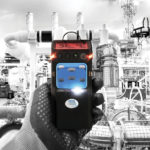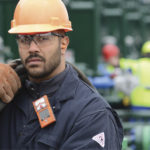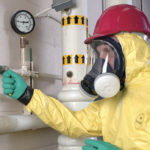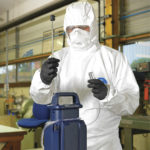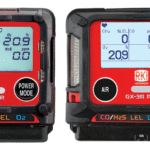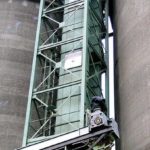Archive for 2021
Good Communication is Critical to Confined Space Safety
By: Bob Henderson, Contributor Confined space entry is a team effort, and good communication is central to confined space safety. Since 1993, OSHA 1910.146, “Permit-Required Confined Spaces,” has made this clear. Entry supervisors, attendants, entrants, rescue team members, employers, contractors and management all need to understand their duties and follow the rules. What is the…
Read MoreHow to Use Gas Detection Data to Your Advantage
By: Dave Wagner, Contributor If you use gas detectors on your worksite but only look at the data they collect after an incident, you may be missing out on critical insights about your work environment; behaviors of those wearing the monitors; and the health and performance of the gas detectors themselves. Here are a few…
Read MoreProtecting Workers from Welding Hazards
By: Barbara Nessinger, Editor-in-Chief According to the American Welding Society, an estimated 50% U.S. gross national product is affected by welding. Anything made of metal, no matter how big or small, can be welded. Welding is the most common method used to join metal parts in large structures and equipment, due to its strength. Soldering…
Read MoreBreathe Easy: A 10-Step Respiratory Protection Training Plan
By: Mark Stromme, Contributor Employees depend on a respirator to keep them safe and healthy when working in a hazardous atmosphere. Make sure they understand how to safely use the equipment. Overview Before you can require employees to wear respirators, the Occupational Safety and Health Administration (OSHA) requires you to take steps to prevent the…
Read MoreAge “Correction” in Hearing Conservation Programs
By: Gregory A. Flamme and Kristy K. Deiters, Contributors Employers may elect to adjust observed hearing threshold changes as an attempt to account for typical age-related change. However, there is no guarantee that age “correction” correctly represents the influence of age, and adjusted threshold shifts are not interpretable for individuals or small groups—because age-related changes…
Read MorePlugging the Knowledge Gap in Hearing Protection
By: Tim Turney, Contributor Approximately 22 million workers are exposed to hazardous occupational noise each year1. Prolonged exposure to excessive noise levels can cause life-changing damage, because the harm to the sensory cells and other structures within the ears is irreversible—often resulting in permanent noise-induced hearing loss (NIHL). NIHL is more common than diabetes or…
Read MoreGX-3R and GX-3R Pro
Confined spaces by definition are small areas. Workers are required to wear gas monitors in these small areas. RKI offers the world’s smallest confined space monitors available, the GX-3R and GX-3R Pro. They are about half the size of the average 4 or 5 gas detectors, comfortably worn within OSHA’s recommended “breathing zone”, and built…
Read MoreInvest in an ACGIH Membership
Get 15 Months for the Cost of 12! Those with 5 years or less of work experience in the field of occupational and environmental health and safety are eligible. Only $95 – over half off full membership price Invest in an ACGIH membership and get 15 Months for the cost of 12 By joining ACGIH today, your…
Read MoreNFPA 61 or NFPA 68 Combustible Dust Explosion Protection of Industrial Bucket Elevators
By Payton Ball, BSME, Regional Sales Manager, REMBE® Inc. Let’s say you are a Project Engineer for a pet food production facility. You’ve recently hired a consultant to conduct a Dust Hazard Analysis (DHA), according to NFPA 61, Standard for the Prevention of Fires and Dust Explosions in Agricultural and Food Processing Facilities, rev. 2020…
Read MoreAvetta Virtual Event Gathers Exclusive High-Profile Supply Chain Experts to Help Companies Reevaluate Risk Management
“Supply Chain 2021: Protecting People & Planet,” a free event from Avetta on Sept 28-29, offers sessions by Avetta’s Supply Chain Insights Team on risk management, safety and supply chains Employers, managers, safety experts and other supply chain workers are invited to attend a free virtual conference from Avetta, the leading provider of supply chain risk…
Read More

